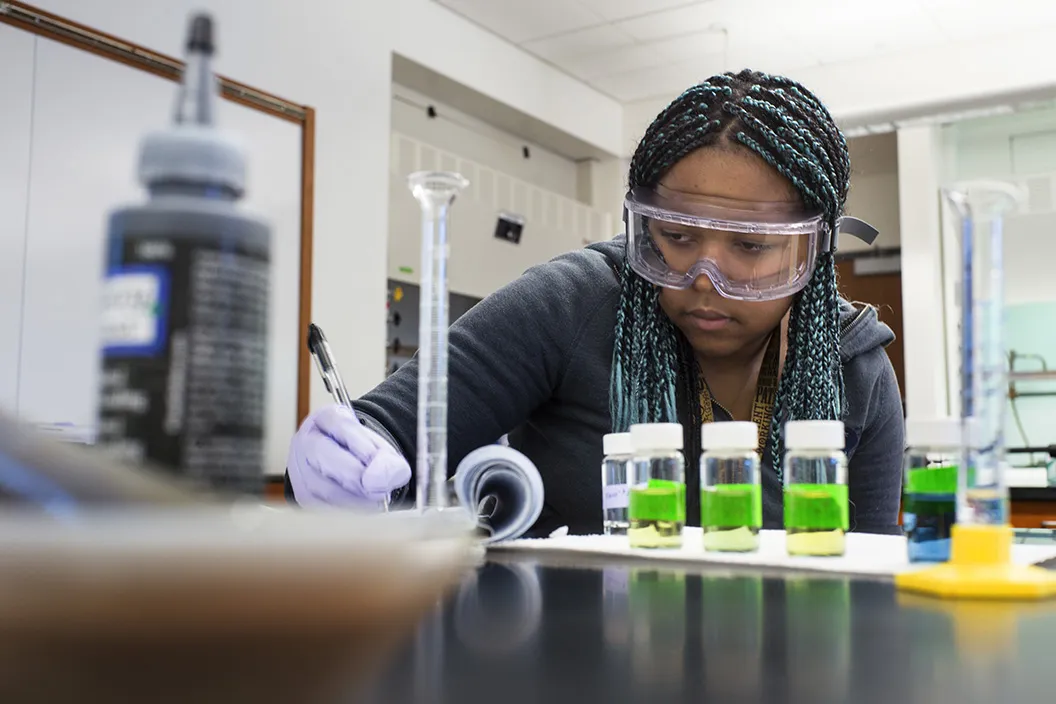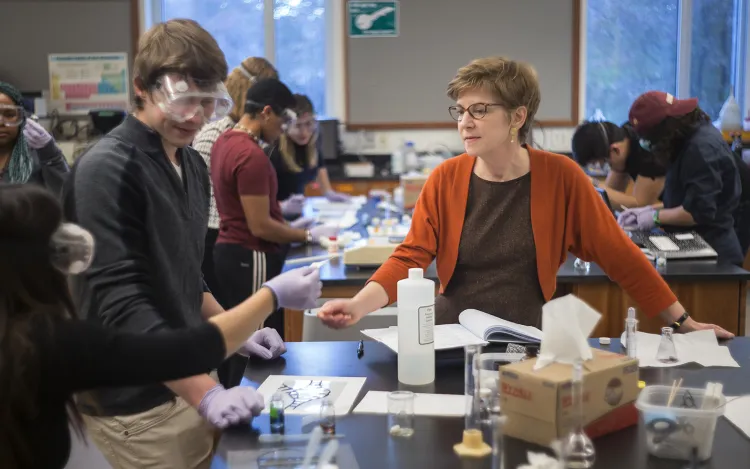Art, Chemistry, and Conservation

Where the science and artistic worlds intersect
Co-taught by Senior Chemistry Lecturer Ginger Heck and Associate Professor of Art History Patricia Reilly, this interdisciplinary course bridges art and science, helping students gain an appreciation for the subject in which they’re less familiar.
“Several of our students are biology or chemistry majors and haven’t taken much in the art department,” says Heck, “so they get an experience from Patricia about the art history and about ways of looking at art from the art perspective. The art students get to see that science isn’t unreachable or unattainable.”

“For me, in a certain way, there’s really no going back,” Associate Professor of Art History Patricia Reilly says about interdisciplinary teaching. “It seems to me that it is the best possible educational experience.”
Over the course of the semester, students research the pigments historically used in paintings, synthesize those pigments from scratch in the chemistry lab, and then create their own art pieces using those hues—or inspired by the techniques studied in the class. The chemical makeup of the colors made for some surprising results: When heated together, for example, yellow sulfur and orangey dichromate combined to make chrome green.
“I never realized that there was so much that went into painting besides putting paint on a canvas,” says Joe Green ’21, who’s considering a career in art therapy. “There’s so much preparation, so much planning, and it can take years—decades—for someone to finish. Learning about the science behind how we see color made me appreciate a lot of things I see in my everyday life.”



